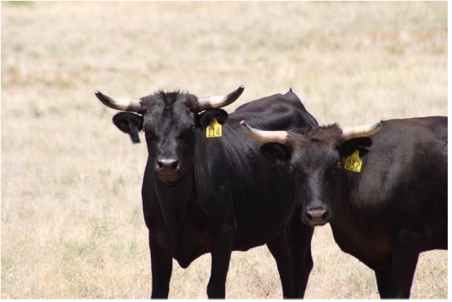For more details about an impact, contact information for NMSU ACES faculty and staff is available at the online directory.
For general questions regarding impacts in this database, please contact Claire Montoya at ccortner@nmsu.edu.

GPS livestock tracking
Monitoring livestock health and spatial grazing patterns on rangelands is challenging. Cattle in Arizona were tracked with GPS equipment and monitored with rumen boluses. Cattle remained closer to water and traveled less each day during hot periods. Cattle may use illumination from the full moon to graze more at night when it is hot. Cattle body temperature increased and activity decreased when the ambient temperature was over 35 C. Real-time tracking and sensor monitoring may be tools to identify periods when livestock may experience heat stress and help improve livestock well-being.